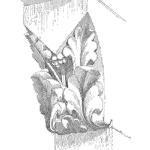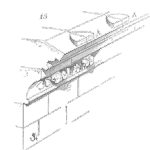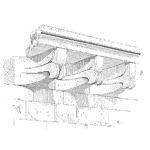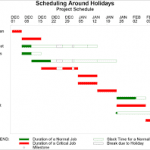
What readers will learn from this article.
- The purpose of pressure relief valves.
- How pressure relief valves work.
- The correct way to install relief valves.
- Selection and testing issues for pressure relief valves.
Your Reliability Engineering Professional Development Site

What readers will learn from this article.
by Fred Schenkelberg 2 Comments

The 2018 ASQ CRE Body of Knowledge has a new top-level section titled II. Risk Management.
A few of the topics, 6 of the 9, are the same or similar to topics in the previous CRE BoK. There are three new topics that extend the reliability engineers need to know, understand, and use risk management tools.
Overall the new section of Risk Management has three groups of topics:
A. Identification
B. Analysis
C. Mitigation
Let’s take a quick look at the details in this new section and highlight the changes and new elements. [Read more…]
by Anne Meixner Leave a Comment

In the previous article you learned to apply the Stuck at Fault Model (S@) to a small combinational circuit.
You can take the learning on the Full 1-bit adder and apply it to larger combinational circuit.
In testing lingo, you often hear people refer to this as the testing of random logic. Technically, there’s nothing random about the logic.
I think “random” gets used to contrast with the highly structured design of memory circuits into array of 1-bit cells. Memory test lends itself to algorithmic testing, for example the Marching 1. In random logic testing you may use algorithms to propagate your faults, that is automatically develop a test pattern.
You need to keep in mind that the logic being tested has a functional purpose and this can be implemented in a multitude of ways. Let’s take a second look at the adder function. [Read more…]

This is the bathtub curve we are often shown.
This is what a real bathtub curve looks like. [Read more…]
by Doug Plucknette Leave a Comment

Just a bit of humor as we push to the end of another work week!
I turned 55 a few weeks back and just yesterday someone asked me how old I was. I had to stop for a minute to think and when I replied 55 the young Engineer who asked me the question sat back in his chair and said; “Wow! That means you have been working in the Reliability Engineering field like 35 years! I can’t imagine the changes you have seen in your career!” [Read more…]
by James Kovacevic Leave a Comment

PdM & CBM are in almost every discussion that involves improving plant performance and reducing costs. But what is the difference between the two and when should one be used over the other? This post will address those two questions and a few cautions when using these techniques. [Read more…]
by Greg Hutchins Leave a Comment

Risk is an interesting concept because there are a number of definitions and interpretations. And this bears on quality because the lack of consistency can make deployment difficult.
Two elements to risk can be seen in the below definitions. There is upside risk and there is downside risk. Some risk definitions have this and others don’t. [Read more…]

What readers will learn in this article.
Cavitation is the occurrence of vapour bubbles in a liquid. A vapour bubble will form when the pressure in a liquid falls so low it boils or the temperature rises so high it boils. [Read more…]
by Fred Schenkelberg 6 Comments

The new CRE body of knowledge goes into effect for exams starting January 2018.
The changes include topics that has been dropped, added, or altered. There also is a new structure with 5 main groups rather than the previous seven. Overall, the BoK remained pretty much the same with a reorganization of the topics.
Reading the new BoK and comparing it to the old BoK raises a few concerns or observations. Let’s take a look at the new structure and what the changes say about the reliability engineering profession. [Read more…]
by Anne Meixner Leave a Comment

To work our ways towards understanding Design For Test (DFT)applications I am taking you back to the Stuck at Fault model (S@).
In the article which introduced you to the S@ model you learned the S@ model at the logic gate level.
Let’s build on this by applying it to combinational logic circuits.
Combinational logic has no clocked circuitry; sequential logic has clocked circuitry. In a few articles you’ll learn about test and sequential logic circuitry. [Read more…]

Big dreams and ambition have always come pretty easily to me. Watching the Magnificent 7 compete for Olympic gold in 1996, 11-year old me was convinced that I could become a champion gymnast. Little did I know that these same dreams and ambitions would help serve as lessons learned in becoming an engineering subject matter expert.
My gymnastics dreams did not care that I only had a couple of years of tumbling training. No bother to my ambition that my parents could not afford our monthly bills, let alone specialized coaching. “No big deal!” said my heart when reminded that I was terrified of a back handspring – how would I ever be able to accomplish the death defying acrobatics an Olympic gymnast must complete? [Read more…]

I posted an article recently by Bloomberg on the Defense Department’s recent disclosure of the escalating support cost of the F-35 Joint Fighter Jet. With over 3,700 views, it was the most read of my posts. The original article on escalating F-35 reliability costs can be read at this link
I posted the article with the comment: “Once a test engineer working for a large DoD contractor once told me at a reliability conference, ‘These new reliability development techniques of HALT and HASS would be a lot easier to implement if spare parts and service did not constitute 60% of the total program profits.’ That was not the first time I have heard a similar comment from a test or reliability engineer or manager working in the defense industry. I believe these engineers working on the reliability end of the programs said these concerns me out of frustration. [Read more…]
by Kevin Stewart Leave a Comment

After the sponsorship and training are in place and resourcing is defined, there is still no guarantee that any investigations will get done. (See the end of the article for links to the blogs about these needs) This is where the definition of insanity applies – “doing the same thing over and over – and expecting different results” – so something must change. If there is no reason to perform an investigation, then things will continue to happen as they always have. [Read more…]
by Fred Schenkelberg Leave a Comment

Talking is not the same as a discussion or conversation. Talking is one direction only. If two people are talking, they are talking at each other.
A discussion is two way. When two people have a discussion information passes both ways, both speak, both listen.
As an engineer, there is plenty to discuss. We work with others to find solutions, make compromises, determine optimizations, and finish projects. We need to share our knowledge and insights, as well as learn from others.
You can learn to foster true discussions and minimize simply talking at one another. You can take steps to enable the give and take exchange of a discussion. [Read more…]
by Christopher Jackson Leave a Comment

Autonomous Vehicles (AVs) are still futuristic – but there are plenty of people are thinking about them and what they would mean – particularly as they relate to safety. And when they do, they invariably think about how vehicles are currently regulated as a starting point.
We envisage perhaps more autonomous vehicle regulation, standards and rules – because AVs are more complex and complicated. But for every regulation, standard and rule, we take responsibility away from the manufacturer.
Why? Because all the manufacturer needs to do is ensure that their AV meets each regulation, standard and rule for them to not be liable for subsequent accidents (this is a simplistic interpretation to be sure … but satisfactory for the sake of this article).
Is this desirable? Is this possible?
 Ask a question or send along a comment.
Please login to view and use the contact form.
Ask a question or send along a comment.
Please login to view and use the contact form.